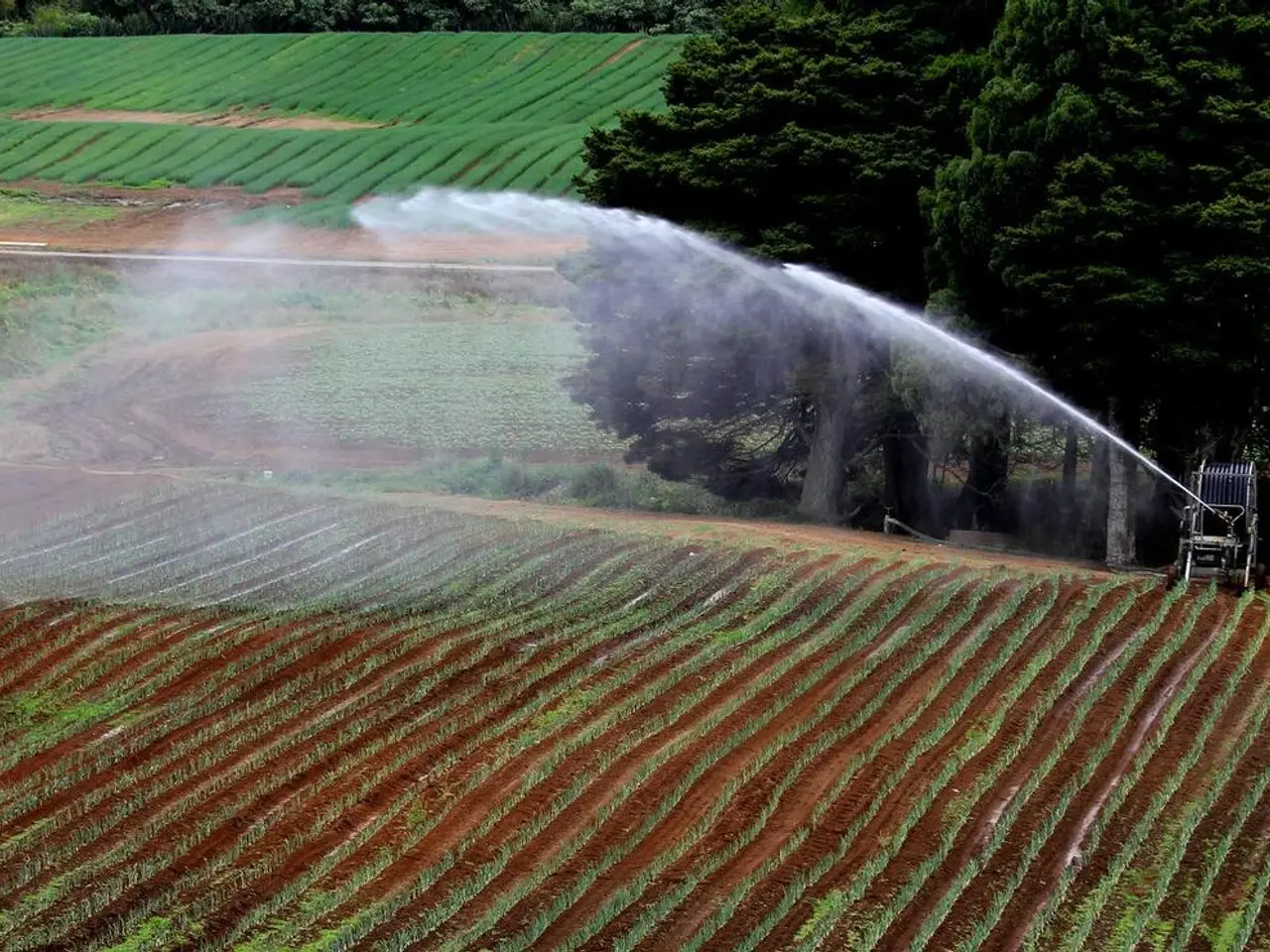AI Might Empower Small Farmers to Hold Their Ground against Agribusiness Heavyweights
In the world of agriculture, artificial intelligence (AI) is no longer a distant concept reserved for large-scale operations. With a focus on simplicity, accessibility, and effectiveness, AI tools are being designed to empower small farmers in developing countries, offering a lifeline in an industry where one bad season can wipe out a family's income.
AI tools are being crafted with clean interfaces, local languages, and offline-first design, making them user-friendly even for farmers with limited technology resources. These tools can run on basic smartphones, providing insights like planting schedules, irrigation advice, and crop health diagnostics.
One such tool is Microsoft's FarmBeats platform, which makes it possible to use AI for irrigation prediction, even in regions with minimal connectivity. Another example is PlantVillage, an AI tool that helps smallholders diagnose crop diseases and predict irrigation needs using image recognition, machine learning, and low-cost sensors.
However, the road to widespread adoption is not without challenges. Smallholders often lack training opportunities, support staff, or time to experiment with new AI tools. The first and most obvious barrier is infrastructure. Many rural areas still lack reliable internet, power outages, or even basic smartphone access, which can prevent the use of AI tools.
To overcome these obstacles, key approaches include leveraging satellite imagery and weather data through AI-powered platforms, providing targeted education and training programs, implementing government and NGO support schemes, and fostering collaborations between tech companies, governments, and farmer organizations.
Partnerships are crucial for the successful implementation of AI in agriculture. They help create open data platforms, enhance connectivity infrastructure, and integrate AI initiatives into national agricultural strategies. One such partnership is Hello Tractor, sometimes dubbed "Uber for Tractors," which connects tractor owners with farmers who need machinery but can't afford to buy, using AI to optimize routes and analyze usage data.
The narrative around AI in small-scale farming needs to shift. Farmers should be treated as clients, experts, and innovators rather than passive "beneficiaries" of technology. Business models for AI tools should be flexible and adaptable to the unique financial situations of farmers, such as pay-as-you-go, shared ownership models, and "AI-as-a-service" cooperatives.
AI is not just a luxury for small farmers, but a survival tool. It offers a second opinion in the field and puts technology into hands that have long been overlooked. With the right strategies and partnerships, the question now isn't whether small farms can use AI, but how quickly we can get the right tools into the right hands.
- In the realm of small-business, similar to that of small-scale farming, AI tools are being developed to cater to the unique needs of entrepreneurs with limited resources, offering personal-finance insights, predictive analysis, and user-friendly interfaces that require minimal tech expertise.
- Data-and-cloud-computing and AI can play a substantial role in small-business operations, providing insights into sales trends, customer behavior, and cost analysis, which can enable business owners to make informed decisions and achieve financial stability.
- With AI-powered tools, small businesses can gain a competitive edge, just as small farmers do, by leveraging technology to optimize their operations, reduce costs, and forecast market trends, ultimately contributing to the growth of the broader economy.




